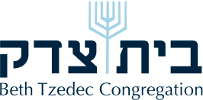The double portion of Tazria and Metzora deals mostly with the identification of a scaly skin disease -- tzara’at -- and the purification rites to get rid of it.
The Greek word λεπρός (leprós), means "scaly" or "rough," and derives from λεπός (lepós), meaning "peeled" or "fine.” The first Greek physician, Hippocrates, grouped together different skin diseases as λέπρα "lepra," due to their appearance. This was incorrectly translated in the 9th century as leprosy and was not corrected in many modern bible translations until approximately the last 60 years. Many will recall that the Hertz Chumash used the word “leprosy.” The Artscroll Chumash says: “tzara’at affliction,” while our new Etz Hayim uses “scaly affection.” The Torah says it can appear in the fabric of clothes and on the walls of homes. We know this to be mold or rot. It is not contagious.
For persons: when a red or white spot appeared on a person's body, if the kohen-physician concluded that it was tzara'at, then the person was sent outside the community. The kohen visited the person every seven days to see if the disease had begun to heal. If it did, the person was to perform a cleansing ritual, bring special sacrifices, and was then welcomed back into the community.
For objects: a dark green or dark red mold appeared that went deep into the fabric of the cloth, plaster or stones. If the kohen-physician could not remove it, the clothing would have been burned, or the house was demolished.
Reading the text closely (which is not easy to do) shows that the ritual is not a cure for the disease, but a ritual for purification after the disease was already cured. The Torah text is uniquely focused more on reconciliation than on the symptoms and the punishment. First stage outside the camp: cedar wood, crimson yarn (reminiscent of blood) and a live bird were dipped into an earthen vessel containing a mixture of spring water (lit. mayim chayim – living waters) and the blood of slain birds. The cured person or house was sprinkled with the mixture and the live bird was set free - think of Noah setting the dove free. Second stage: after laundering clothes, bathing and shaving, the tzara’at could re-enter the camp but could not return to his family. Third stage: on the eighth day, oil, semolina and sheep for sacrifices were brought. Blood was daubed on the earlobe, thumb and toe to symbolize the reactivation of the senses. Only then was it possible for the tzara’at to join the family. The eighth day is symbolic as a time of renewal, as it was for the dedication of the priesthood in the previous week’s reading of Shemini.
The late bible scholar Jacob Milgrom viewed the scale disease as representing the forces of death and the purification process as a symbolic rite of passage to life. “As the celebrants move from the realm of impurity outside the camp, and are first restored to their community, then to their home and finally to their sanctuary, they have passed from impurity to holiness, from death to life. In so moving, they are reinstated with their communities, their families and with their God.”





